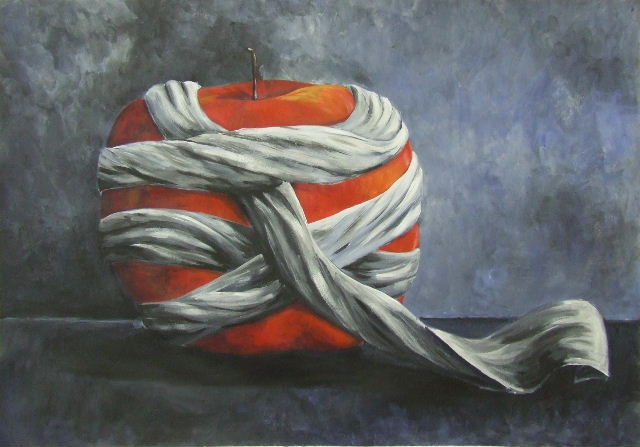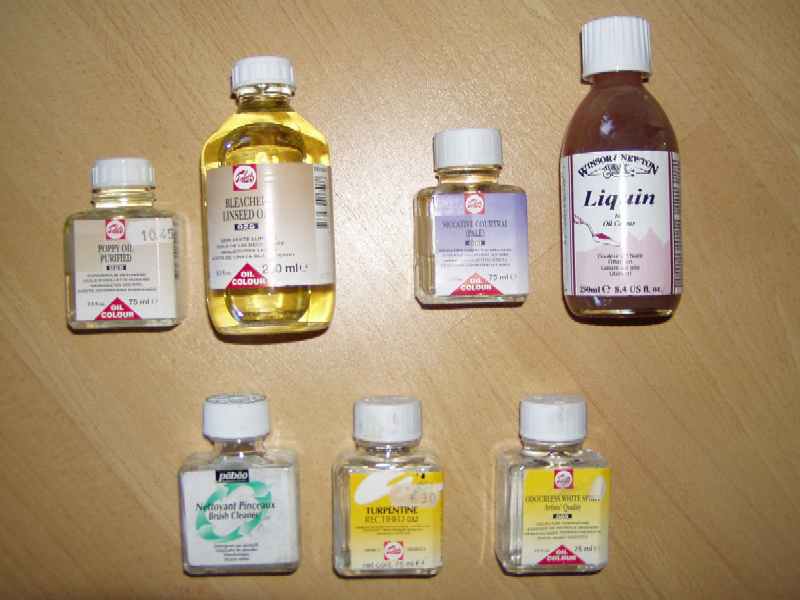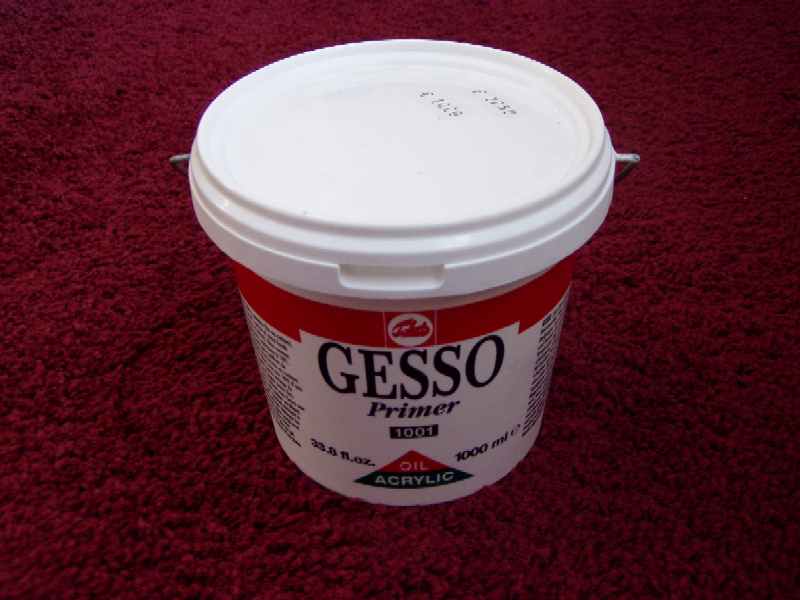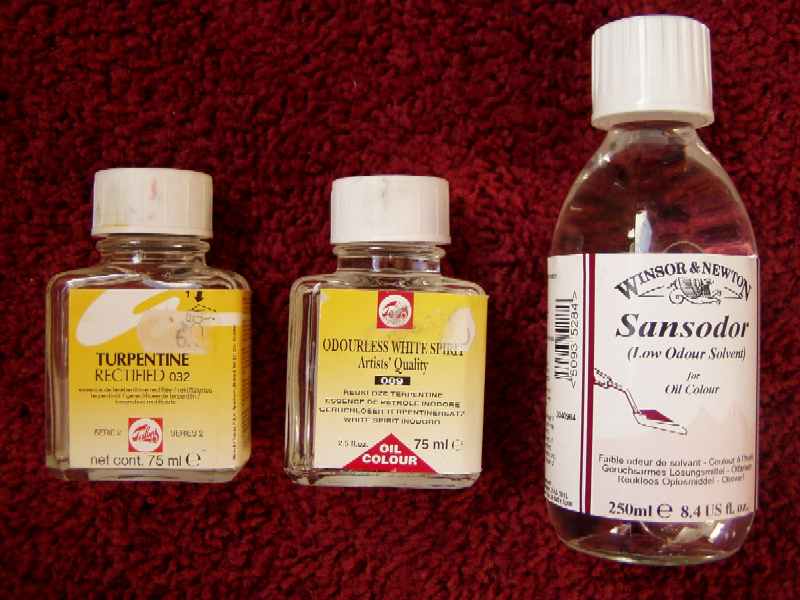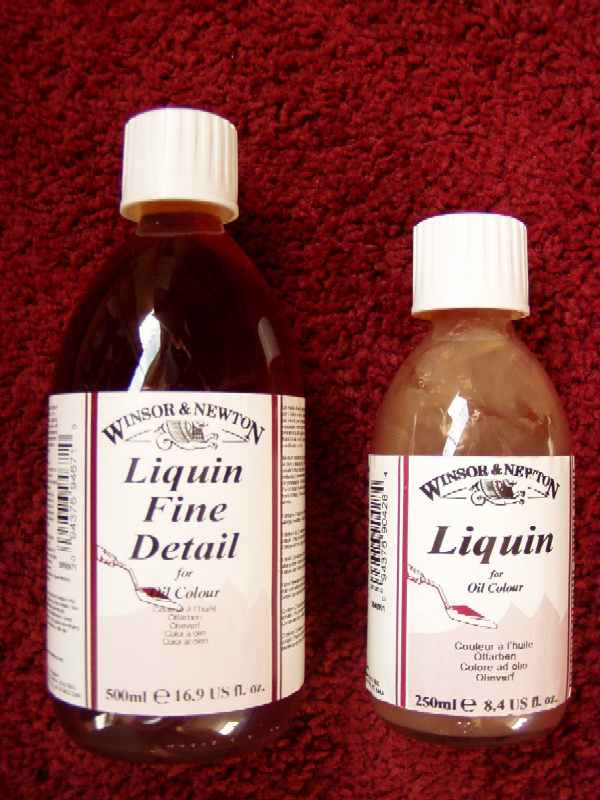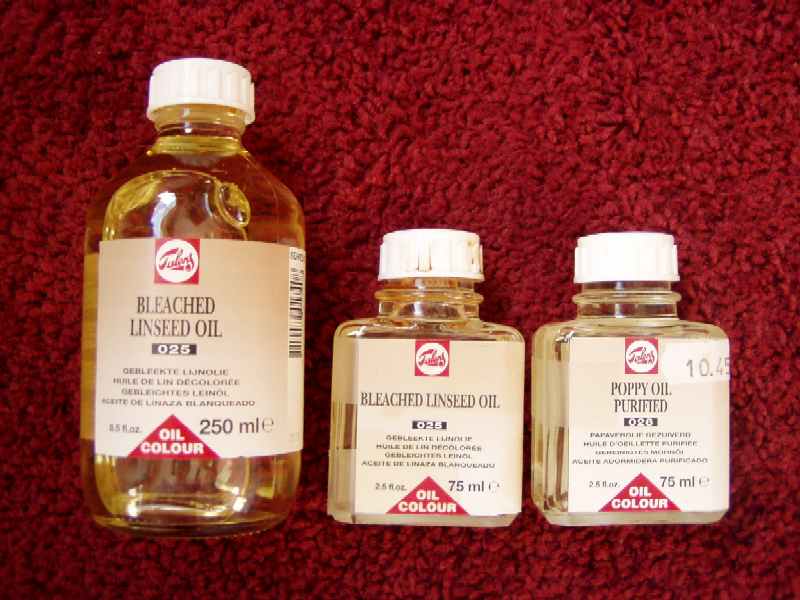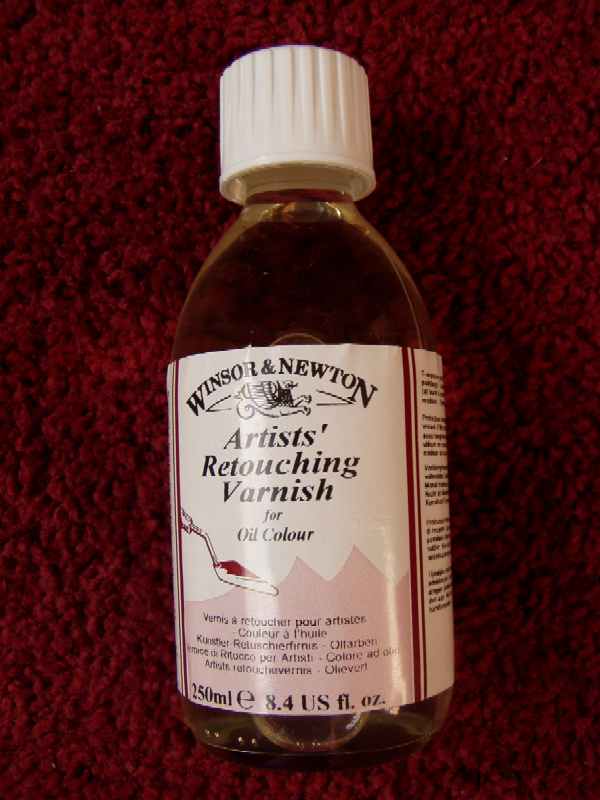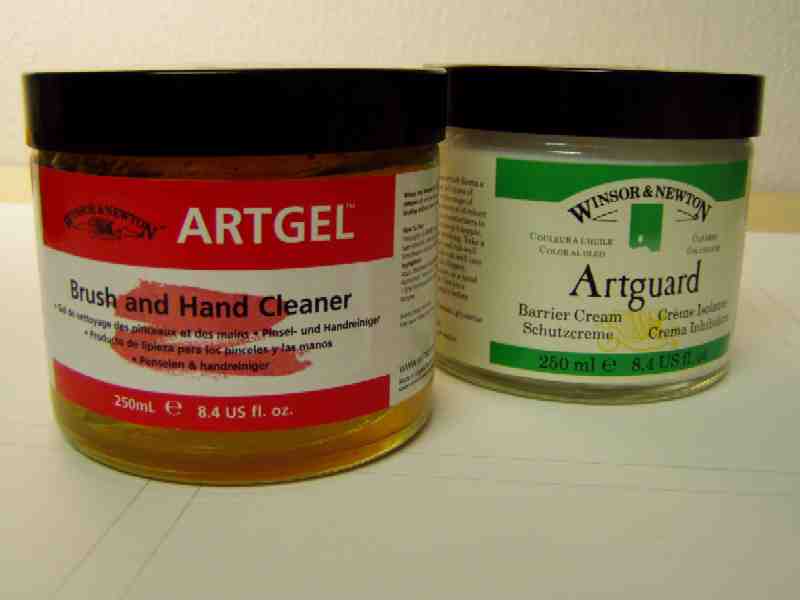4. Oils:
Oils are used to reduce the consistency of the paint. The paint becomes slightly thinner. Moreover, they improve flow, making brushstrokes less visible. Oils are also used in glazing techniques, and you can use them to make your own painting medium.
An overview:
- Cold-pressed linseed oil; can be added to paint to thin the consistency and improve flow. It also increases gloss and transparency.
- Refined / purified linseed oil; has similar properties to cold-pressed linseed oil but dries more slowly. This is the most popular oil.
- Bleached linseed oil; accelerates drying, improves flow, and is particularly suitable for working with light colors due to its light color.
- Thickened / boiled linseed oil; accelerates drying even faster than bleached linseed oil, improves flow, gloss, and durability of the paint layer.
- Drying linseed oil; promotes the drying of all drying oils and increases gloss.
- Stand oil; improves paint flow and ensures better leveling. Stand oil is very suitable for glazes and fine detailing. Slows drying and is the best choice when oil is used as a medium. It is best to apply stand oil in the final layers.
- Poppy oil; slow-drying oil, suitable for use with light colors.
- Drying poppy oil; accelerates drying. Resistant to yellowing and very suitable for use with light colors.
|
5. Varnishes:
(Final) Varnishes provide an even gloss layer and protect your painting. Varnishes are usually available in matte and glossy finishes. Oil paintings must be completely dry before applying a varnish layer. For thin paint layers, this takes a minimum of 6 months. There are several types:
- Dammar varnish; traditional high-gloss varnish. This varnish can only be thinned with a powerful solvent like turpentine. Talens also provides Dammar varnish in matte.
- Painting varnish (Talens); available in matte and gloss.
- Acrylic varnish (Talens); available in matte and gloss, suitable for both oil and acrylic paints.
- Artists’ gloss varnish and Artists’ painting varnish (Winsor & Newton); high-gloss and crystal clear. They are the modern replacements of Dammar varnish.
- Consev-Art varnish (Winsor & Newton); available in matte and glossy. A crystal-clear varnish that can be easily removed for over 100 years.
- Wax varnish (Winsor & Newton)
There is also retouch or retouch varnish available. This provides temporary protection to recently completed oil paintings. The paint must dry for at least a month. Then, when the paint is completely dry, a layer of final varnish can be applied over the retouch varnish. Retouch varnish is also used to revive matted or dull spots on the painting.
|
6. Other Products;
In addition to the mentioned products, there is, for example, siccatif. This is a product that reduces the drying time of oil paint. There is siccatif Courtrai, which is clear in color, and siccatif Harlem, which is slightly darker in color.
Under the category of other products, there are also special cleaning agents such as hand cleaner, for example, Artgel from Winsor & Newton or Hand Cleaner from Talens. Winsor & Newton also has a protective cream that you can apply to your hands before painting. This prevents harmful substances from penetrating your skin and simplifies cleaning.
|
| ll in all, there are many possible additives, and these are just two brands. Other brands generally have similar products. If you want to delve into this further, you can find an overview of manufacturers under the "Materials" category. Most manufacturers have a website where their products are extensively described. Ultimately, the product you choose largely depends on personal preference. This overview provides a good idea of the possibilities. Of course, you don't need to purchase everything. This depends, among other things, on the technique you use, and with a few additives, you can go a long way. Some examples of how to work with these additives in practice are discussed in the article "Oil Painting - Working with Mediums." |



